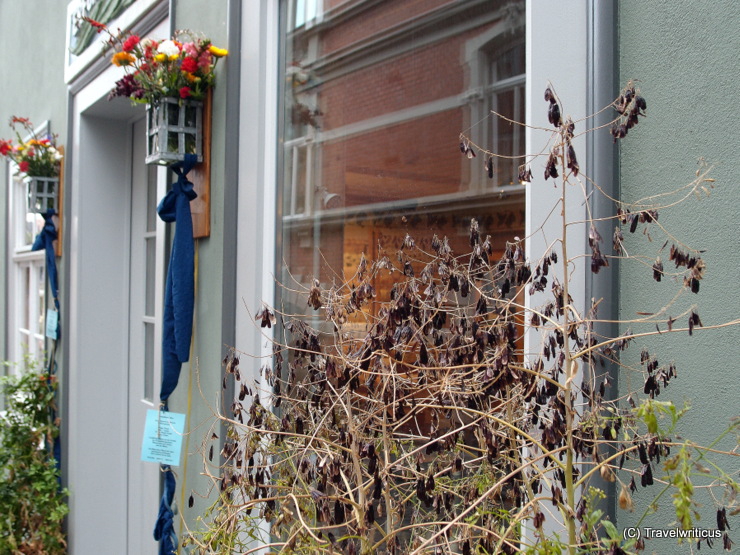
At the shop ‘Erfurter Blau‘ (Erfurt Blue) I learned more about the history of the trade in Dyer’s Woad. The prosperity of Erfurt is largely owing to the fact that this city was a big trading place for woad also known as Isatis tinctoria.
You only see what you know (Goethe)

At the shop ‘Erfurter Blau‘ (Erfurt Blue) I learned more about the history of the trade in Dyer’s Woad. The prosperity of Erfurt is largely owing to the fact that this city was a big trading place for woad also known as Isatis tinctoria.

Peering through gates often gives interesting insights. This inner yard in Erfurt made me think to live in a different period or to be on a stage. Actually the Kunsthof Pianola is a venue with medieval touch not far away from the center of the city.

In 1970 West German politician Willy Brandt and East German politician Willi Stoph met in Erfurt. Willy Brandt stayed at Hotel Erfurter Hof in a room behind these windows. The first visit of a West German statesman in the GDR had a big impact into the memories of local people.
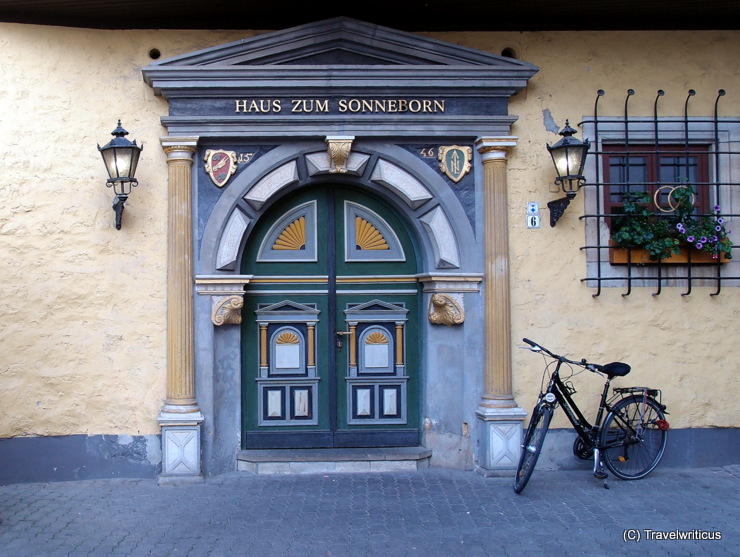
Behind this door you will find the registry office and a venue for marriages. The building is a reconstruction but the portal dates back to Renaissance period.
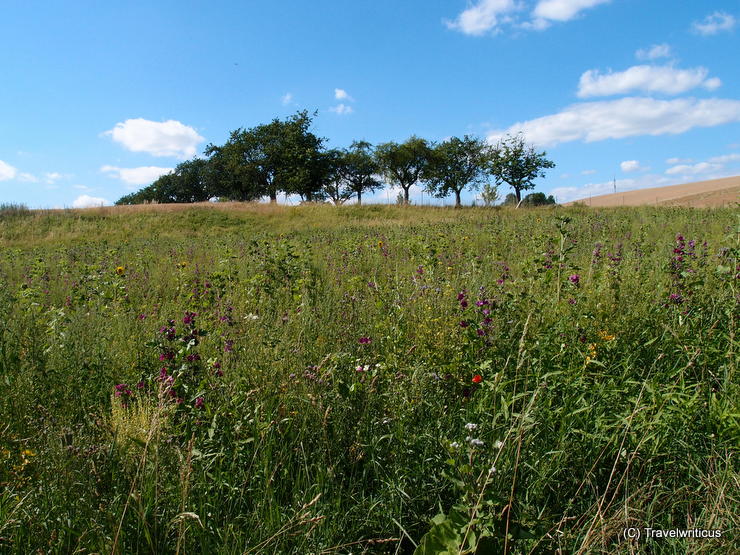
Impression of the Ilm Valley cycle route (Ilmtal-Radweg) in Thuringia, Germany.
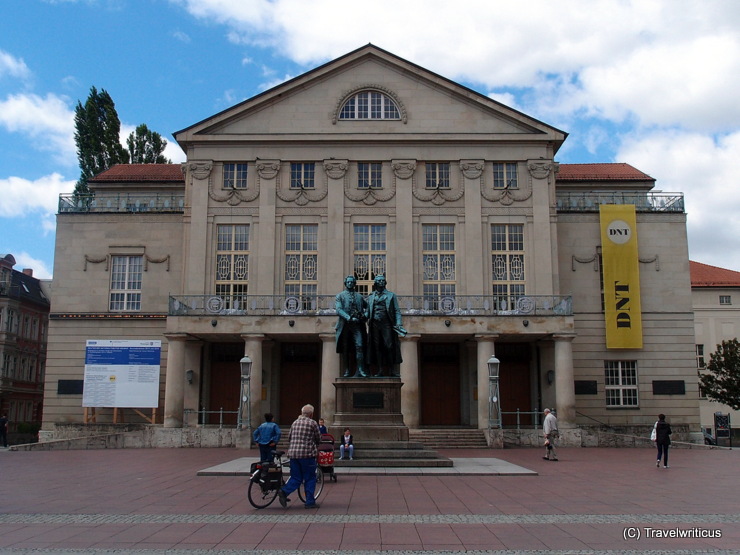
The Deutsche Nationaltheater and Staatskapelle Weimar is a twin institution consisting of the Deutsche Nationaltheater (German National Theatre) and the Staatskapelle (Symphony Orchestra) of Weimar. The edifice depicted above is the main venue (Großes Haus) of this institution.
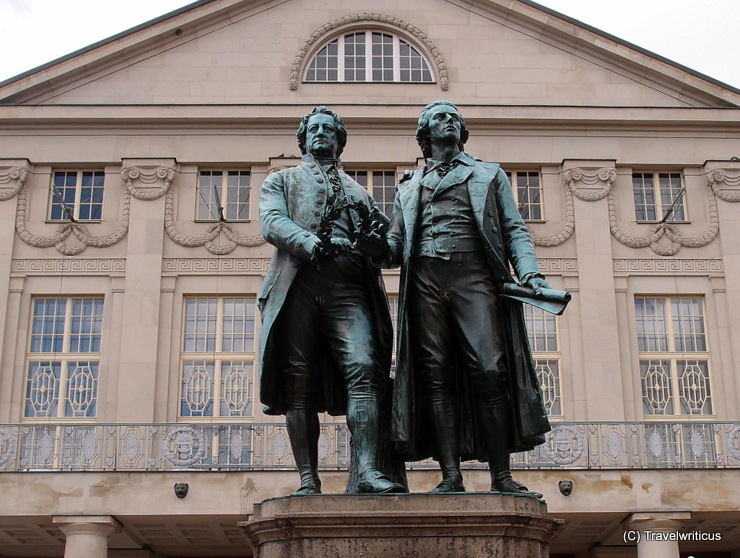
Probably the most known photo scene of Weimar: The monument to Johann Wolfgang von Goethe and Friedrich Schiller. It is located on the Theaterplatz (Theatre Square) in front of the Deutsche Nationaltheater (German National Theatre).
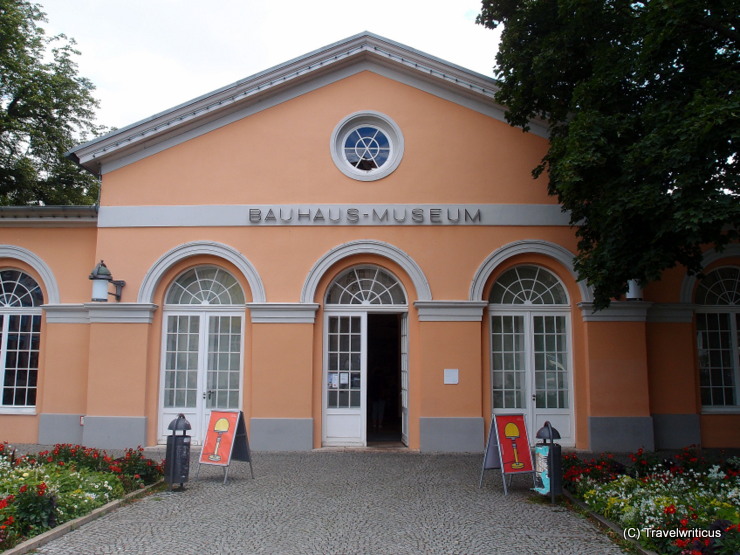
The Bauhaus Museum displays works by teachers and students of the Bauhaus school (1919-1933), including seminal works by Walter Gropius, Johannes Itten, Lyonel Feininger and Marcel Breuer.
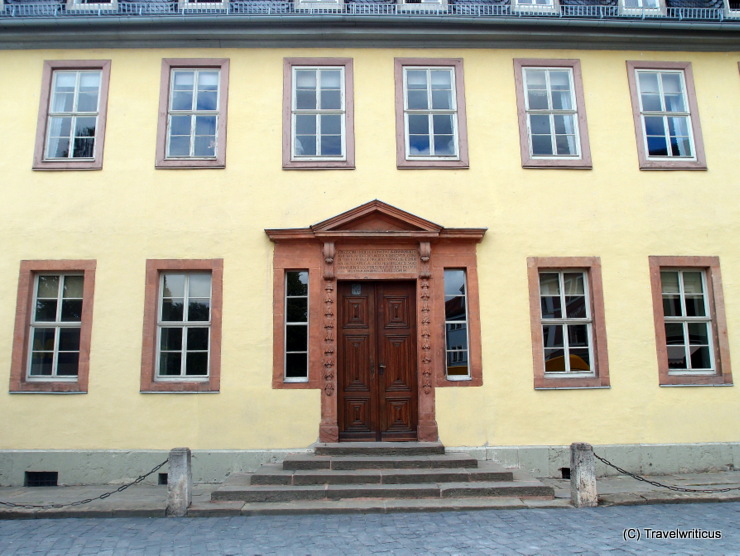
This door was the former main entrance of Johann Wolfgang Goethe’s home in Weimar. Today the building houses the Goethe National Museum and is part of the World Cultural Heritage Site ‘Classical Weimar’.
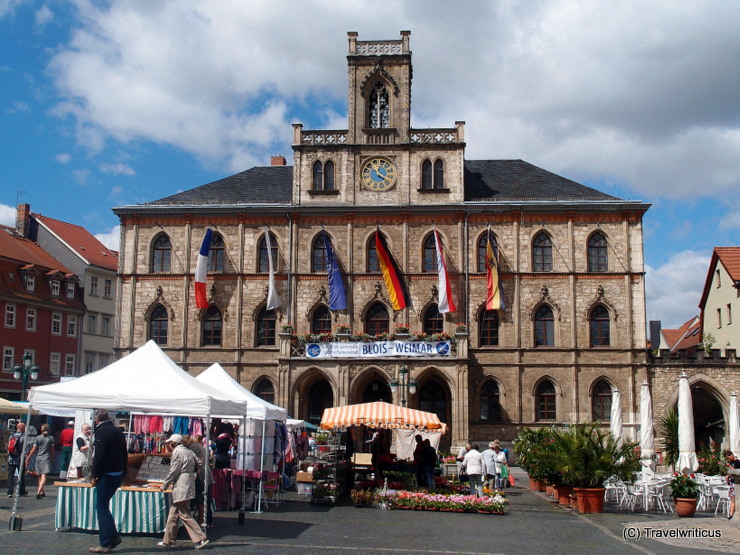
The city hall of Weimar was built in 1841 in neo-Gothic style. In the tower you can listen to a Glockenspiel made of Meissen porcelain.
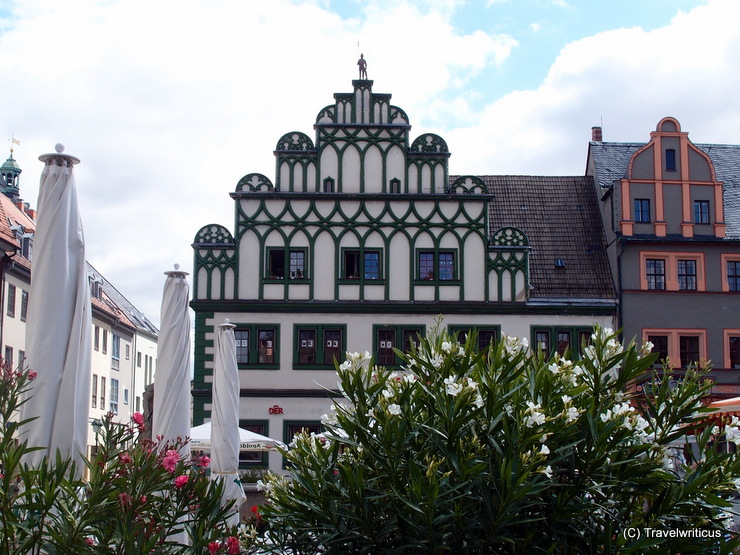
The Stadthaus of Weimar (Weimarer Stadthaus) is a Renaissance building at the market place of Weimar. After demolition in WWII the building has been reconstructed in the 1970s.

The Duchess Anna Amalia Library (Herzogin Anna Amalia Bibliothek) houses a major collection of German literature and historical documents. In 2004 a large part of the library became destroyed by a terrible fire. In the ground floor there is a worth seeing exhibition telling about how scientists rescued damaged documents.